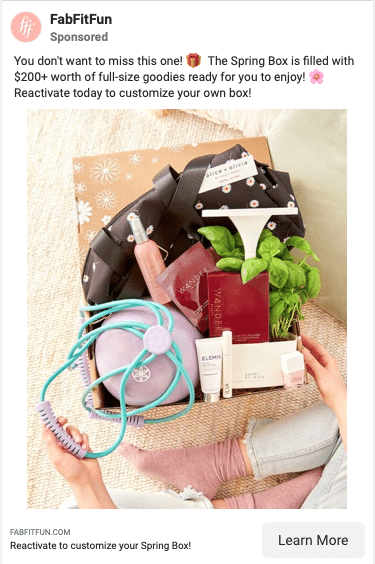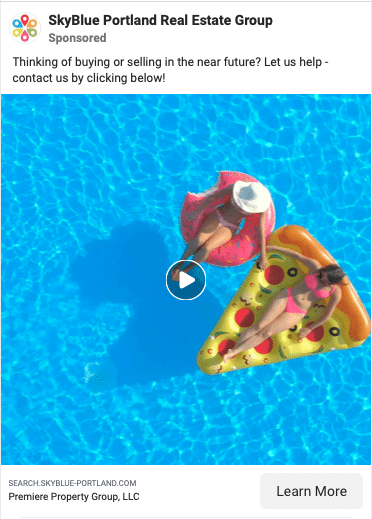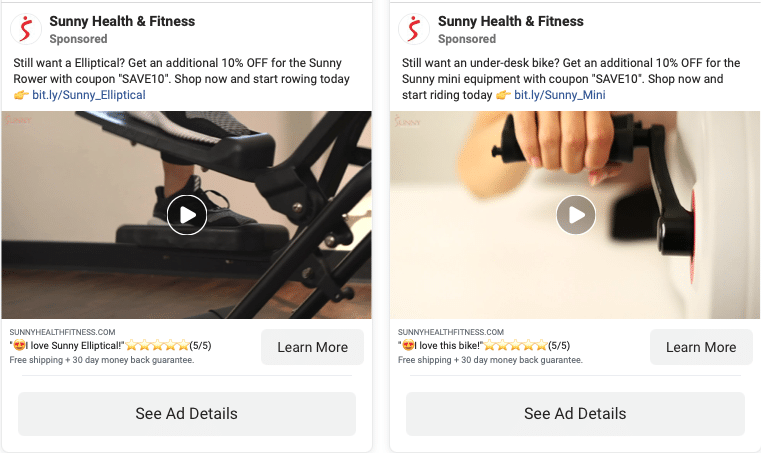We all love online shopping for one reason or another, but how many times have you laid in bed, adding item after item to your cart, only to leave it be and not actually buy anything? For brands, those abandoned carts are new opportunities to connect with potential customers. And there are other similar chances to reach out to an almost-customer, too.

As an advertiser, you have to be savvy and creative to get those potential customers back and converted. That’s where retargeting strategies come in – and Facebook makes it easy to run these sorts of campaigns.
In this article, we’re going to cover Facebook retargeting strategies that you can use to reel in would-be customers who are close to converting.
Note that while there are differences between remarketing and retargeting, for our purposes, we’re going to use the terms interchangeably.
What Are Remarketing Facebook Campaigns?
Remarketing campaigns show customized ads to users who have already somehow engaged with your brand. How do they do that? Whenever a user visits your landing page, social media page or website, their browser logs a cookie or pixel. You can then digitally follow them around the web, showing them content that’s targeted right to them – like ads for the exact items they left in their cart.
If a potential customer somehow got off of their customer journey and stopped traveling through your sales funnel, this is one highly effective way to get them back. With the Facebook remarketing pixel, you can do the following:
- Cross- and up-sell products to recent customers.
- Encourage a user to complete their purchase or learn more about an item they’re on the fence about.
- Show your message to users who visited specific landing or website pages.
The reason retargeting works so well is because the information available is extremely specific to the user. Now, let’s get into the strategies.
Encourage Past Customers to Buy Again
New customers are always welcomed by brands, but old customers are much more valuable because repeat purchasers tend to buy over and over again. With retargeting ads from Facebook, you can continually appeal to them to keep enticing them back (and back again).
For example, you can run an ad that shows them a newer version of a product they purchased a year ago. You can also run a cross-promotion ad for an item that will go with something else they purchased. Or, customize discounts just for your best customers to treat them like the VIPs they are.
Know Which Blog Visitors to Target

By using website parameters in ads, you can narrow in on the blog visitors who are most likely to become valuable for your brand. Those include:
- People who have viewed two or more blog posts.
- People who visited both a blog post and a landing page.
- People who visited both a blog post and a pricing page – the pricing page shows that there’s a lot of interest in what you’re offering.
Essentially, you can set up remarketing ads to show to people who engaged with your content on a deeper level than simply reading one article and leaving your site.
Reach Users Who Showed Interest in a Product

For users who checked out a product page but didn’t add an item to their cart, you can target ads to them that show the product they clearly had their eye on. Facebook even lets you exclude users who went through with an order so that you’re not showing them products they just purchased. The idea here is that the user may not have been ready to buy when they looked at the product, but they may be ready now – and showing them the product again can remind them of that.
Reduce Your Cart Abandonment Rate
If a potential customer went so far as to research, find and add an item to a digital shopping cart, odds are they’re pretty interested in buying it – even if they abandoned the cart without making a purchase. They’re so close to the part of the sales funnel where they actually buy that you can give them the tiny nudge they need with a retargeting campaign. (You can also run campaigns that encourage people to purchase items on their wish list.)
Create Special Offers
Few things are more motivating for shoppers than a discount. When a user has already shared their content info to score a freebie, like an e-book or free trial, you can target ads to them that offer a paid product or service at a discounted price. Or, if you think that the user still isn’t ready to spend money and they need to be nurtured more, you can offer another freebie, like an extended free trial.
Choose the Right Timetable
The point of retargeting users is to keep your brand and product front and center in their minds. You can only do that if you get to them in the right window of time. For brands with a short sales cycle (and a limited number of touchpoints along the customer journey), remarket to users within 15 to 30 days. If your sales cycle is more nuanced, you can take a bit more time.
Also, don’t remarket too soon to recent customers. If a user just converted, they don’t want to see an ad promoting the product they just bought or even pushing your brand in general. Unless you have an excellent cross-sell item to show them, don’t remarket to recent customers until two weeks after their purchase.
Wrapping Up
Shoppers go through the trouble of finding items they’re interested in, selecting their preferences and adding those items to their cart – only to then forget about them and never actually make a purchase.
That’s a lot of money you’re not making, not to mention missed moments to make a stellar impression on a soon-to-be loyal customer. If you don’t want to let all of that go, check out how to create a retargeting campaign on Facebook – or chat with us about handling it for you.